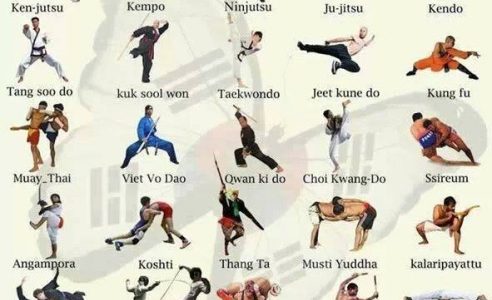Martial Arts Training: Discovering The Right Equilibrium Of Rate And Precision
Martial Arts Training: Discovering The Right Equilibrium Of Rate And Precision
Blog Article
Material Writer-Carstensen Humphries
Imagine you're standing beside a tightrope, ready to take your primary step. As you gather your emphasis, you realize that this fragile harmonizing act is not so different from the globe of fighting styles.
In martial arts training, finding the ideal equilibrium of speed and precision is vital for success. Yet just how do you strike that perfect balance? It's an inquiry that has actually intrigued specialists for centuries, and in this discussion, we will certainly check out the relevance of rate and accuracy, reveal training methods to attain balance, and deal with the usual challenges that emerge in the process.
Prepare to find the secrets that will boost your fighting styles trip to brand-new elevations.
The Relevance of Rate and Accuracy
When it pertains to fighting styles training, rate and accuracy are crucial components that can make all the difference in your efficiency. Accomplishing the ideal equilibrium in between rate and accuracy is important for reliable martial arts techniques.
Speed permits you to respond quickly to your challenger's movements, giving you a benefit in fight. It allows you to carry out strikes and blocks promptly, capturing your opponent off guard.
On the other hand, accuracy makes sure that your strategies land precisely and with optimal effect. It enables you to hit the target with precision, raising the performance of your strikes.
Training Approaches for Accomplishing Balance
To develop the right equilibrium between speed and accuracy in your martial arts training, it's vital to implement reliable approaches that optimize your efficiency.
One training approach is to concentrate on particular techniques and drills that target both rate and precision. By exercising high-speed motions with accuracy and control, you can enhance your general efficiency.
Another method is to integrate interval training, alternating in between high-intensity bursts of rate and periods of rest or slower motions. https://www.sfchronicle.com/sf/article/People-are-freaking-out-From-martial-arts-16633256.php helps construct endurance and agility while likewise enabling you to tweak your accuracy.
Furthermore, practicing mindfulness and psychological visualization can improve your equilibrium by training your mind to focus on both speed and precision all at once.
Common Obstacles and Just How to Conquer Them
One typical challenge in fighting styles training is preserving a balance in between rate and precision, yet it can be conquered with regular practice and focus. Below are a few ideas to assist you conquer this difficulty:
- Focus on correct strategy: Take the time to learn and master the right kind and technique for each relocation. what are martial arts will certainly assist you create precision and accuracy in your strikes and motions.
- Gradually enhance speed: Start by practicing gradually and progressively raise your speed as you come to be a lot more comfy with the strategy. This will certainly assist you maintain control and precision while implementing relocations at a quicker speed.
- Technique timing and reaction drills: Include drills that focus on timing and reacting to your opponent's motions. This will enhance your ability to strike with speed and precision in a genuine fight circumstance.
Verdict
As you conclude your martial arts training, you have actually found the fragile equilibrium of rate and precision. By focusing on both elements, you have gotten the capability to implement remarkable techniques with lightning-fast speed.
It's no coincidence that your dedication and perseverance have actually led you to this degree of mastery. Accept this newly found balance, and continue to refine your skills, knowing that rate and precision are the secret to becoming an extraordinary martial artist.
